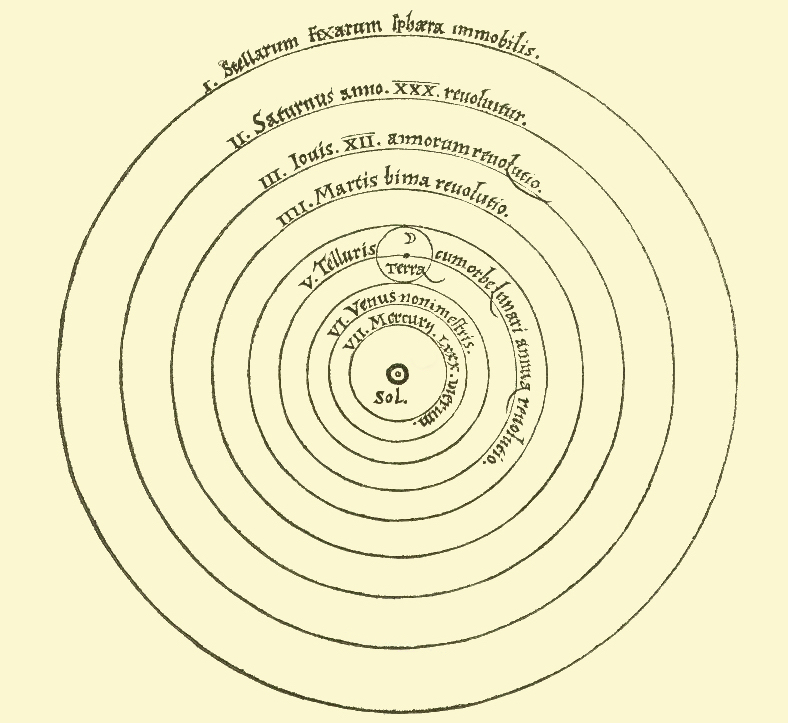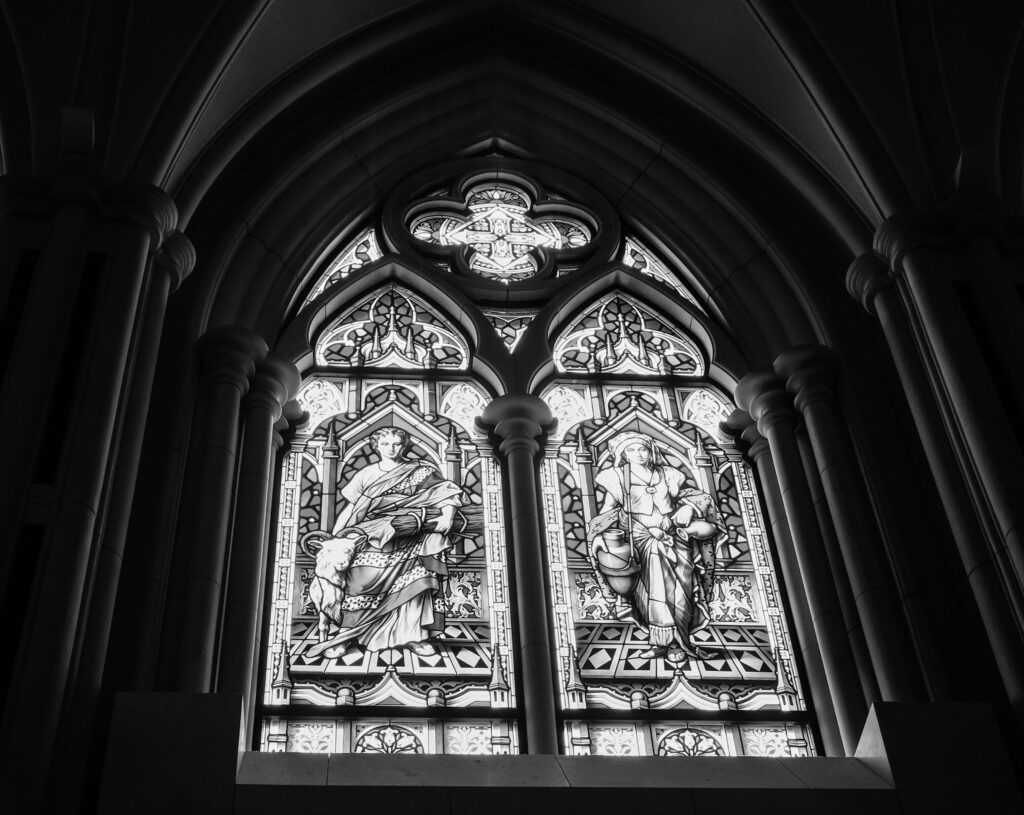
How simplistic narratives can mislead us: a case study of the Galileo affair
We need to know how to deal with complexity to avoid falling for false myths about the past, argues Patrick J. Casey.
“Of course, everyone knows that in the Middle Ages the Roman Catholic Church burned scientists at the stake for their scientific beliefs.” Such claims aren’t uncommon on university campuses. It’s ‘common knowledge’ that science and religion are locked in perpetual conflict. After all, didn’t people, informed by their religion, believe that the Earth was flat well into the Middle Ages or even later? Wasn’t Copernicus hounded by Christians for demoting the Earth from its privileged place at the center of the cosmos? Didn’t the Church torture Galileo for defending heliocentrism?
As it happens, none of these stories are accurate. Yet anecdotes about religion suppressing science are part of a broader cultural narrative of conflict where science and religion have been locked in a zero-sum struggle – when science advances, religion is forced to beat a hasty retreat. This view of the historical relationship between science and religion is called ‘the conflict thesis’ (see here, here, here).
Although it is almost universally panned by historians of science and religion, it remains popular, even in some academic circles. But simplistic narratives like the conflict thesis aren’t innocuous – they can warp our understanding of history (for example, here and here the historians of science Stephen Snobelen and Seb Falk address the myth of the ‘Medieval Gap’, which is grounded in the conflict thesis, as promulgated by writers like Carl Sagan, Jerry Coyne, and A.C. Grayling).
As university instructors, we are responsible not only for the production of knowledge but also for its dissemination.
If simplistic narratives inhibit our ability to produce and disseminate knowledge, that implies we have an obligation to foster the capacity to handle complexity – in ourselves, in our students, and in the broader public.
The Galileo affair
The Galileo affair is a case in point. In popular culture, suffused with the conflict thesis, Galileo is portrayed as having been vilified, even tortured by the Roman Catholic Church, which, tenaciously holding to blind faith, denied plain facts. Historians have spilled oceans of ink to counter false narratives of this kind, but the ease and simplicity of the conflict thesis means that the evidence historians present — which paints a far more complex picture (see here, here, here) — reaches and persuades few.
History is multidimensional. This means that if we want to see how the conflict thesis warps our understanding of history, we have to dig into the details. In what follows, I will offer a narration of the Galileo affair while attempting to point out the various axes around which the story turns. I want to suggest that the Galileo affair must be understood as having at least four axes: religious, scientific, philosophical, and political.

The Religious axis: Catholic vs Catholic
What did happen to Galileo? In short, in 1633 Galileo was found guilty of ‘vehement suspicion of heresy’, forced to recant his belief in heliocentrism, and sentenced to house arrest for the rest of his life. This incident is perhaps the strongest case for conflict between science and religion. Yet, even here the issue is far more complicated than many realize.
Decades earlier, in 1615, Galileo, a somewhat recent convert to heliocentrism, was accused of heresy by the Dominican monk Niccolò Lorini. The accusation was prompted by Galileo’s Letter to Benedetto Castelli (1613), which argued for the compatibility of heliocentrism with scripture. To make this case, Galileo employed a standard Augustinian argument that God would have accommodated the language of scripture to the comprehension of the unlearned people for whom the Bible was written; therefore, it shouldn’t be taken as a guide to the physical nature of the universe.
To us, this argument may seem innocuous. But Galileo made this argument in the wake of the Reformation, when there were ongoing, intense debates about who had the authority to interpret scripture. In the eyes of some in the Church, Galileo was abrogating the Church’s authority by instructing fellow Catholics in biblical interpretation as a layperson.
Implying that the authority to interpret the Bible lay with someone other than the Church was a risky move for a Catholic during the Counter-Reformation. In other words, Galileo, while a loyal Catholic, sounded too much like a Protestant. What has become emblematic of a conflict of science versus religion began as an intra-religious conflict about who had the authority to interpret the Bible.
The scientific axis: The Church sides with the scientific consensus
The episode prompted the Church to formally examine heliocentrism. Despite Copernicus broaching the topic in 1543, the Church had no official position on heliocentrism, apparently preferring to leave it to the natural philosophers and astronomers to sort out. Galileo himself went to Rome to defend heliocentrism, though historians argue that his combative style likely only harmed his cause and reputation. In 1616 the Holy Office ruled that heliocentrism was ‘foolish and absurd in philosophy’ and contrary to scripture. The ruling was followed by an order that Copernicus’ work (a particular version of which Galileo was defending) be temporarily suspended until the necessary edits were announced (see a ‘corrected’ copy of Copernicus’ De Revolutionibus).

Historians still debate the motivations for such a ruling, yet as the philosopher and historian Maurice Finocchiaro points out – and contrary to what the conflict thesis would lead us to believe – the objections to heliocentrism at the time ‘were not just religious, theological, and scriptural, but involved considerations ranging from the astronomical and physical to the epistemological and methodological’.
The Church was perfectly aware of the scientific and philosophical objections to heliocentrism and deemed the weight of the evidence to be against the physical truth of heliocentrism (hence the language that it was ‘foolish and absurd in philosophy’). After all, if the problem was purely scriptural, the Church had established interpretative tactics for dealing with apparent conflicts between the Bible and natural philosophy (including the doctrine of accommodation) and could have availed itself of such means if it felt compelled to do so.
The reality is that the weight of the scientific evidence was simply not firmly on the side of heliocentrism when the Church issued its 1616 ruling. At that time, and contrary to Galileo, most natural philosophers regarded Copernicus’ heliocentric model only as a useful calculating device, not an accurate picture of the physical universe. The distinguished historian of science and religion, Peter Harrison, notes that the Church was essentially endorsing the scientific consensus of the time. But why were most of Galileo’s colleagues opposed to heliocentrism?
For one thing, heliocentrism was incompatible with the only comprehensive physics of the day — Aristotle’s. For another, astronomers were aware that there had been no observation of stellar parallax, which, given the state of knowledge of the time, was a powerful argument against heliocentrism. Not even Tycho Brahe, the greatest observational astronomer of the sixteenth century, could find it; partly for that reason, he rejected the Earth’s motion.
As historian David Lindberg puts it:
“Those astronomers and natural philosophers who rejected heliocentrism did so not because of blind conservatism or religious intolerance, but because of their commitment to widely held scientific principles and theories.”
In short, many rational, fully informed people perceived Galileo to be on a fool’s errand; the Church seems to have agreed.

The philosophical and political axes: a philosophical debate and Galileo’s political blunder
In conjunction with the Church’s 1616 ruling, Galileo was admonished by Cardinal Robert Bellarmine to abandon heliocentrism, but he was not found guilty of any crimes. Galileo went home and worked on other things, including a treatise on the philosophy of science, The Assayer, published in 1623.
That same year, Cardinal Maffeo Barberini, an ardent admirer of Galileo, was elected Pope Urban VIII. Subsequent conversations with Pope Urban left Galileo with the impression that he could publish a book on heliocentrism. However, while we have no record of what was actually said, the permission apparently came with a crucial proviso that Galileo treat the subject only hypothetically, not as if the motion of the Earth had been proved.
In addition to a reasonable desire to keep with the Church’s previous ruling, the pope had a fairly sophisticated philosophical justification for his instruction — one that foreshadows what is now called ‘the underdetermination thesis’ in the philosophy of science. The pope argued that whatever evidence Galileo may have had for heliocentrism, it couldn’t amount to a demonstration or proof of its physical truth, since it is possible for God to bring about whatever was observed through means other than heliocentrism. At the time, an obvious example would have been Tycho Brahe’s geo-heliocentric system, which readily accounted for Galileo’s new observational evidence without needing the objectionable hypothesis of a moving Earth.
In taking this position, the pope was standing in a long tradition in natural philosophy that maintained that the job of astronomers was not to determine what the world was physically like but only to provide useful models for predicting the motions of planets.
Stated charitably, the pope was instructing Galileo not to go beyond his evidence.
Unfortunately, when Galileo published his Dialogue, he argued adamantly for the physical truth of heliocentrism, ‘clearly, though not explicitly’ (in the words of Peter Machamer and David Marshall Miller), while sometimes making his opponents seem like idiots. To make matters worse, Galileo foolishly put the pope’s argument about the difficulty of ascertaining final scientific truth into the mouth of a character called Simplicio, which many have taken to be an insult to the pope. The pope was enraged by Galileo’s apparent deceit in defending the physical truth of heliocentrism as an established matter of fact, and Galileo was summoned to Rome to stand trial.
For better or worse, the trial of 1633 was not the site of a renewed debate about the status of heliocentrism. Rather, the trial focused on whether Galileo had violated the Church’s instruction not to argue for the physical truth of heliocentrism. In the end, Galileo was forced to recant and sentenced to house arrest at his villa in Florence for the rest of his life.
Conflict or not?
So, what should we say about the Galileo affair? Is it an instance of conflict between science and religion? It’s difficult to render a clear-cut verdict for several reasons.
First, the major players in the drama were Catholics, and several were learned in astronomy; Bellarmine had even lectured on astronomy at the University of Louvain. One might argue that the affair boils down to a disagreement among Catholics about whether the available evidence was strong enough to warrant reinterpreting a few biblical texts that had always been read in light of geocentrism. At the same time, because of the ongoing debate about the purpose of astronomy, some have regarded the Galileo affair as an in-house conflict among natural philosophers about philosophy of science.

Second, there is clearly a political dimension to this story. One must bear in mind that the trial took place just when the Reformation had vastly diminished the power of Rome. As one might expect, the pope would have been sensitive about public slights to his authority.
Third, and most important, even if this were a clear case of conflict, one incident wouldn’t by itself justify the grand cultural narrative of inexorable conflict between science and religion. Historians of the era have repeatedly pointed out that the Galileo affair was not representative of the norm.
So why do people persist in seeing the Galileo affair as an instance of straightforward conflict between science and religion? Differences in interpretation of events are often the result of what we bring to the evidence. What we bring with us to our inquiries shapes what we find there. Consequently, if we bring a simplistic narrative of conflict to the evidence, we’ll be more likely to latch onto everything that confirms that view while minimizing or ignoring anything that doesn’t fit with the narrative.
Understanding complex realities requires us to tolerate a kind of cognitive dissonance when we would rather have a satisfying resolution.
Learning the history of science and religion is instructive in this respect: It enables one to see that though there is abundant evidence of complexity, many would rather default to the less demanding narrative of conflict. This should alert us to the power of a simplistic narrative to warp our understanding of the world.
Some takeaways
So, what do we do to encourage nuanced thinking in our students?
First, we should point out to our students how our beliefs and assumptions shape how we understand the world. For example, in discussing the conflict thesis, I will offer examples of historical ‘myths’ and juxtapose them with more comprehensive accounts.
Many of my students are still taught that people in the Middle Ages believed that the Earth was flat. Comparing this myth with the reality raises the question of why so many people believe something that isn’t true. The answer seems to be, in part, that people take the conflict thesis – and the concomitant idea that religious people are intellectually backward – for granted, and this has caused them to be susceptible to misinformation. Educating students to recognize that the beliefs and assumptions we bring to history can shape what we find there empowers them to think critically about simplistic historical narratives.
Second, we should regularly emphasize that history is complicated because life is complicated. As I tell my students (with apologies to the writers of The Princess Bride), “History is complicated. Anyone who says differently is selling something.” It is worth calling attention to the fact that people in the past were just as complex and multidimensional as we are. There are frequently a multiplicity of reasons for what we think and a multiplicity of motivations for what we do. Why believe that people in the past would be any different?
Third, students learn from what we model for them at least as much as from what we say. Consequently, we should ensure our narratives convey a substantial amount of nuance – or at least to ‘flag’ when we are simplifying. If all our stories are simplistic and binary (e.g., “science is good and progressive” while “religion is bad and regressive”), we are likely to create people who are unable to understand or cope with the complexity of the real world. We do a disservice to our students – even harm them – when we deny them sophisticated resources for making sense of their own experiences and the broader world.
This article was originally published here on the Heterodox Academy blog.
Patrick J. Casey
Patrick J. Casey is an assistant professor of philosophy at Holy Family University and a Heterodox Academy Writing Fellow.

